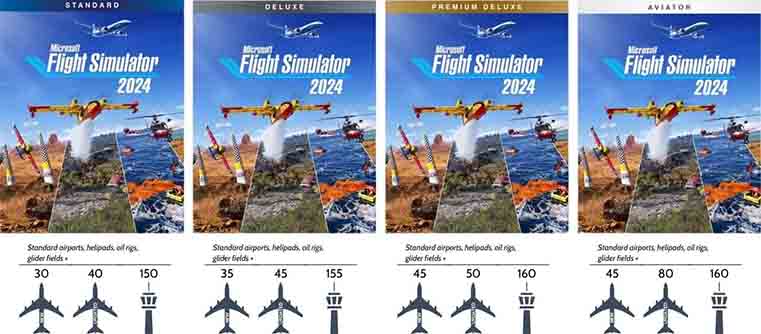Microsoft Flight Simulator 2024 has taken a significant leap in its depiction of engine failures, melding realism with immersive gameplay. Players are now faced with a range of scenarios that mirror real-world aviation challenges, which adds a layer of authenticity that was previously unattainable in flight simulation. The variety of engine failure types, from total engine loss to partial malfunctions, forces pilots to employ their skills and knowledge in real-time, keeping them on their toes and enhancing the stakes of every flight. Key features include:
- Dynamic failure modes: Engine failures can occur based on various factors, including wear and tear and in-flight decisions.
- Innovative response protocols: Pilots must evaluate their options swiftly, ensuring safety while maintaining aircraft control.
- Training simulations: New tutorials prepare players for potential failures, emphasizing the importance of preparedness in aviation.
The technical intricacies of the simulator delve deeper into the mechanics of engine operation, enabling players to understand how their actions can directly influence the aircraft’s performance. Each malfunction is designed to challenge the pilot’s decision-making skills and knowledge of aerodynamics, thus promoting a hands-on learning experience. With advanced graphics and carefully curated sound effects, the simulator brings these failures to life, making every simulated incident feel urgent and realistic. Players now have to master not just the controls but also the art of problem-solving in mid-air: a game-changing aspect for longtime fans of the genre.
- Realistic soundscapes: Engine failures are accentuated by immersive audio, heightening the sense of urgency during emergencies.
- Integrated weather factors: Environmental elements can exacerbate engine failures, adding another layer to the challenge.
- Community feedback system: Players can contribute suggestions to improve failure mechanics, ensuring the experience evolves and remains engaging.
Understanding the Impact of Emergency Procedures on Gameplay
Emergency procedures in Microsoft Flight Simulator 2024 are crafted to simulate the intense realism experienced by pilots in critical situations. When an engine failure occurs, players are thrust into high-pressure environments, forcing them to prioritize decision-making at a moment’s notice. The game employs a sophisticated algorithm to mimic real-life consequences, where every choice can lead to vastly different outcomes. Players must remain calm under pressure, navigating through a series of quick-time events that test their knowledge of aircraft systems and emergency protocols. This immersive experience not only enhances engagement but also encourages a deep understanding of aviation principles.
The impact on gameplay is profound, as the realism of emergency scenarios reshapes typical flying experiences. Players must familiarize themselves with checklists that guide them through systematic responses, such as managing engine failure, assessing altitude, and preparing for potential landings. Each flight session becomes a lesson in crisis management, incorporating essential skills such as situational awareness and resource allocation. Moreover, the feedback from these scenarios often influences future gameplay, reinforcing learning and adaptation. By taking emergency procedures seriously, Microsoft Flight Simulator 2024 effectively transforms routine flights into educational journeys, providing insights into both pilot skills and the complexities of flight dynamics.
Technical Insights: Analyzing the Simulation of Mechanical Failures
The recent developments in Microsoft Flight Simulator 2024 have ushered in a new era of realism, particularly in the realm of simulating mechanical failures. By integrating advanced algorithms and physics-based systems, the game offers a comprehensive representation of engine malfunctions that pilots may encounter. This allows users to experience a variety of scenarios that challenge their piloting skills under pressure. Notably, the simulation examines multiple failure mechanisms, including:
- Power Loss: Sudden power cuts leading to unresponsive controls.
- Overheating: Engine overheating scenarios prompting emergency protocols.
- Fuel Starvation: Simulating fuel mismanagement impacting performance.
- Mechanical Breakdowns: Random and unexpected failures that test quick thinking and decision-making.
The meticulous attention to detail in these mechanical failure simulations is not just about enhancing immersion; it serves as a practical training tool for aspiring pilots and seasoned aviation enthusiasts alike. Users are compelled to engage in critical thinking and apply knowledge from aerodynamics and aircraft operations to troubleshoot issues effectively, enhancing their learning experience. The ability to customize the severity and frequency of these failures further allows players to tailor the challenge to their proficiency level, making it a versatile training platform that can accommodate both novices and experts in aviation.
Recommendations for Enhancing the Experience of Engine Emergencies
To enhance the experience of engine emergencies in Microsoft Flight Simulator 2024, developers could implement a series of features that deepen realism and challenge players. Firstly, incorporating detailed failure modes for different aircraft engines would allow for a broader range of scenarios. This could include random component failures, variations based on altitude and weather conditions, and more nuanced responses that require quick decision-making from pilots. Secondly, adding dynamic environmental factors—such as wind direction changes, turbulence, and temperature effects—during engine failures could elevate the stakes, pushing users to adapt their flying strategies in real-time.
Furthermore, enhancing the training modules for engine emergencies would benefit both new and experienced pilots. Providing interactive simulations that mirror real-life engine failure protocols can help players learn effective emergency procedures, boosting both confidence and skill. Additionally, a collaborative mode that allows for multiplayer emergency drills could foster community engagement, encouraging pilots to share strategies and experiences. integrating a realistic feedback system, where pilots receive detailed performance reviews after managing engine failures, could motivate continuous improvement and promote a deeper understanding of aviation safety principles.
